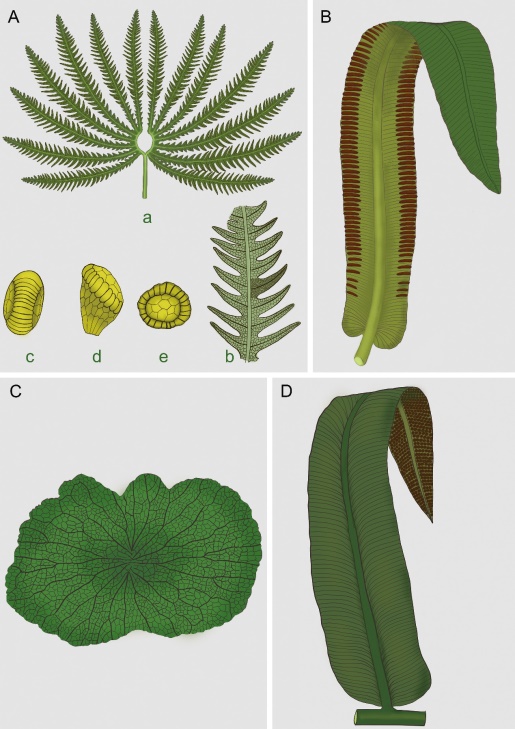
The end-Triassic mass extinction (ETME), one of the five most severe extinction events in Earth history, caused the disappearance of ~80% of all species.
The severity of land plant diversity loss is not well understood. Plant macrofossils usually have a limited stratigraphic resolution, but tracking their species diversity and lived environment can provide a more intuitive and effective method for studying the extinction rate and evolution mode of terrestrial vegetation.
An international research team investigated the diversity and ecology of fern during the Triassic-Jurassic (Tr-J) transition in the Sichuan Basin of South China and focused for the first time on the impact of the end-Triassic mass extinction event on the fern communities.
Their study was published in Global and Planetary Change. It revealed the pattern of vegetation turnover during the end-Triassic mass extinction on the basis of fern communities from South China.
Researchers led by Prof. WANG Yongdong from the Nanjing Institute of Geology and Palaeontology of the Chinese Academy of Sciences (NIGPAS), Dr. ZHOU Ning, Prof. ZHANG Xingliang from the Northwest University, China, and Prof. Wolfram Kürschner from the University of Oslo were involved in the study.
The researchers collected fossil fern records, approximately 67 species ascribed to 16 genera of eight families, from 16 localities of the Rhaetian Xujiahe Formation to the lowermost Jurassic Zhenzhuchong Formation. The results indicated a gradual decline in both the genus and species levels of macro-microflora of ferns at ETME, with no obvious mass extinctions in the Sichuan Basin.
However, the fern and palynological data showed a clear vegetation turnover after the end-Triassic in the Sichuan Basin, reflecting the response of vegetation changes in places far away from Central Atlantic Magmatic Province (CAMP) volcanism.
The paleoecological analysis based on macroflora and microflora in the Sichuan Basin shows a warm and humid condition of tropical-subtropical climate during Rhaetian followed by an increase of specific dry-resistant taxa, indicating a dryer environment at the Earliest Jurassic.

Fig. 1 Sketch drawing of some fern species from the Upper Triassic in the Sichuan Basin. A. Dictyophyllum nilssoni; B. Marattia muensteri; C. Hausmannia emeiensis; D. Danaeopsis fecunda

Fig. 2 Sketch drawing of some fern species from the Upper Triassic and Lower Jurassic in the Sichuan Basin. A. Coniopteris tiehshanensis; B. Todites kwangyuanensis; C. Cynepteris lasiophora; D. Phlebopteris xiangyuensis

86-10-68597521 (day)
86-10-68597289 (night)

52 Sanlihe Rd., Xicheng District,
Beijing, China (100864)

